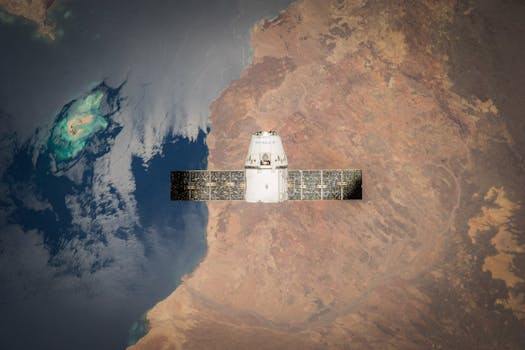Satellite Telecommunications 2023: Key Developments and What They Mean for the Industry

Satellite Telecommunications 2023: Key Developments and What They Mean for the Industry
Satellite Telecommunications 2023 has been a year of significant growth and transformation for the industry. With the increasing demand for global connectivity and the rising importance of space-based communications, satellite telecommunications have become an essential part of modern life. In this article, we will explore the key developments in satellite telecommunications in 2023 and what they mean for the industry.
The satellite telecommunications industry has witnessed a surge in investments and innovations in recent years. One of the key developments in 2023 has been the launch of new satellite constellations, such as the Starlink constellation by SpaceX and the OneWeb constellation. These constellations aim to provide high-speed, low-latency internet connectivity to remote and underserved areas around the world. The launch of these constellations has not only expanded the reach of satellite telecommunications but also increased the competition in the industry, driving down costs and improving services.
Another significant development in 2023 has been the growth of satellite-based broadband services. With the increasing demand for high-speed internet, satellite-based broadband services have become a vital part of the telecommunications industry. Companies such as Hughes Network Systems and Viasat have launched new satellite-based broadband services, offering faster speeds and lower latency. These services have not only improved the overall quality of internet connectivity but also enabled new applications such as online gaming, video streaming, and virtual reality.
Advances in Satellite Technology

The satellite telecommunications industry has also witnessed significant advances in satellite technology in 2023. One of the key developments has been the introduction of new satellite designs, such as the use of phased arrays and digital payloads. These new designs have enabled satellites to operate more efficiently, reducing power consumption and increasing capacity. Additionally, the use of advanced materials and manufacturing techniques has improved the reliability and lifespan of satellites, reducing the risk of failures and improving overall performance.
Another significant advance in satellite technology has been the development of new propulsion systems. Traditional propulsion systems have been limited by their fuel efficiency and payload capacity. However, new propulsion systems, such as electric propulsion and advanced ion engines, have improved the fuel efficiency and payload capacity of satellites. These new propulsion systems have enabled satellites to operate for longer periods, reducing the need for replacement and improving the overall sustainability of satellite missions.
Regulatory Environment and Industry Implications

The regulatory environment for satellite telecommunications has also undergone significant changes in 2023. The Federal Communications Commission (FCC) has introduced new regulations to facilitate the growth of satellite telecommunications, including the approval of new satellite constellations and the allocation of new spectrum bands. These regulations have not only encouraged innovation and investment in the industry but also improved the overall quality of satellite telecommunications services.
However, the regulatory environment has also posed challenges for the industry. The increasing demand for satellite telecommunications has raised concerns about spectrum congestion, interference, and orbital debris. The industry has had to adapt to these challenges by developing new technologies and strategies to mitigate the risks. Additionally, the regulatory environment has also raised concerns about the environmental impact of satellite telecommunications, including the risk of collisions and the accumulation of space debris.
Conclusion and Future Outlook

In conclusion, the satellite telecommunications industry has witnessed significant developments in 2023, transforming the way we communicate and access information. The launch of new satellite constellations, the growth of satellite-based broadband services, and advances in satellite technology have all contributed to the growth and transformation of the industry. However, the industry has also faced challenges, including regulatory complexities, spectrum congestion, and environmental concerns.
As we look to the future, it is clear that satellite telecommunications will continue to play a vital role in shaping the global telecommunications landscape. The industry is expected to continue growing, driven by increasing demand for global connectivity and the rising importance of space-based communications. However, the industry must also adapt to the challenges and complexities of the regulatory environment, ensuring that satellite telecommunications are safe, sustainable, and accessible to all.
See more:





